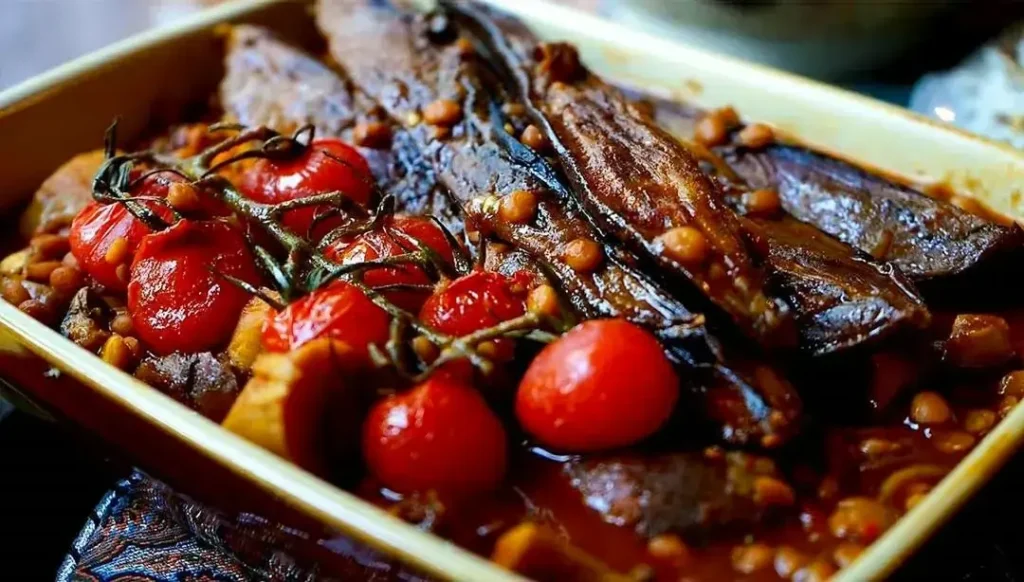
How to Cook Khoreshte Gheymeh
If you’ve ever tasted Iranian cuisine, you know it’s a celebration of flavors, aromas, and centuries-old traditions. One of the dishes that regularly surprises and delights non-Iranians is Khoreshte Gheymeh Bademjan, or Persian Eggplant Stew. With its rich saffron-infused broth, tender chunks of lamb or beef, melt-in-your-mouth eggplants, and aromatic yellow split peas, Gheymeh Bademjan is a perfect ambassador for Persian hospitality and culinary artistry.
Not only is this hearty stew a comforting main dish, but it also tells the story of Iran—the oldest country in the world—through its ingredients, flavors, and history. If you’re curious about popular Iranian dishes and have enjoyed Persian food in the past, here’s everything you need to know to bring this classic to your own kitchen.
A Brief History of Khoreshte Gheymeh
Khoreshte Gheymeh has long been part of Iranian home cooking, especially at gatherings and religious festivals. The word “Gheymeh” comes from the Persian word for “minced” or “cubed,” originally referring to the small pieces of meat prepared for this dish. Over time, cooks began to add yellow split peas, fragrant spices, dried Persian limes (limoo amani), and tomato, which give Gheymeh its bold, slightly tangy flavor.
The addition of fried eggplants (bademjan) is a more modern touch but quickly turned Gheymeh Bademjan into a classic in its own right. Famous Iranian figures have praised this dish, and it remains a mainstay on festive tables throughout Iran, often served alongside crowd-pleasers like Ghorme sabzi recipe or Kabab Koobideh Persian style.
Types of Gheymeh
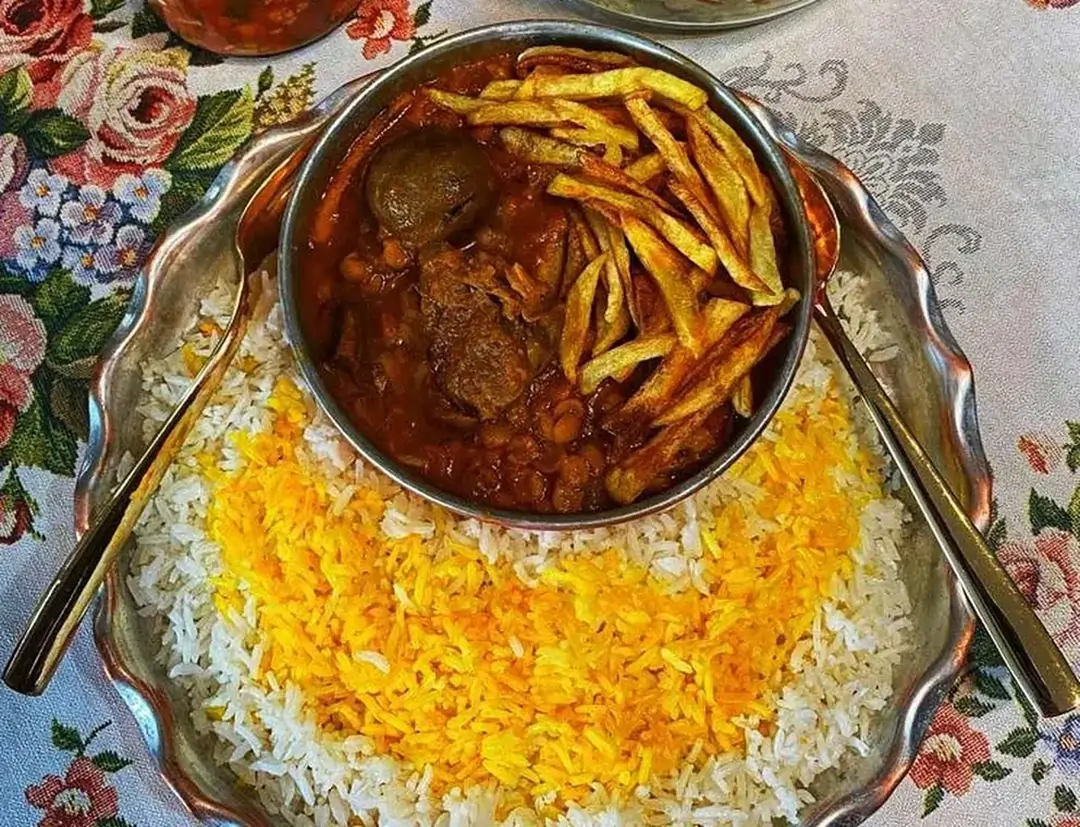
The base of Gheymeh is incredibly versatile and has given rise to several types:
- Gheymeh Bademjan: The classic version, featuring fried or roasted eggplants.
- Gheymeh Sibzamini: Topped with crispy French fries instead of eggplants, especially popular with children.
No matter the type, this dish is often enjoyed with fluffy Persian rice and that coveted Persian crispy cake (Tahdig) at the bottom of the pot.
Ingredients
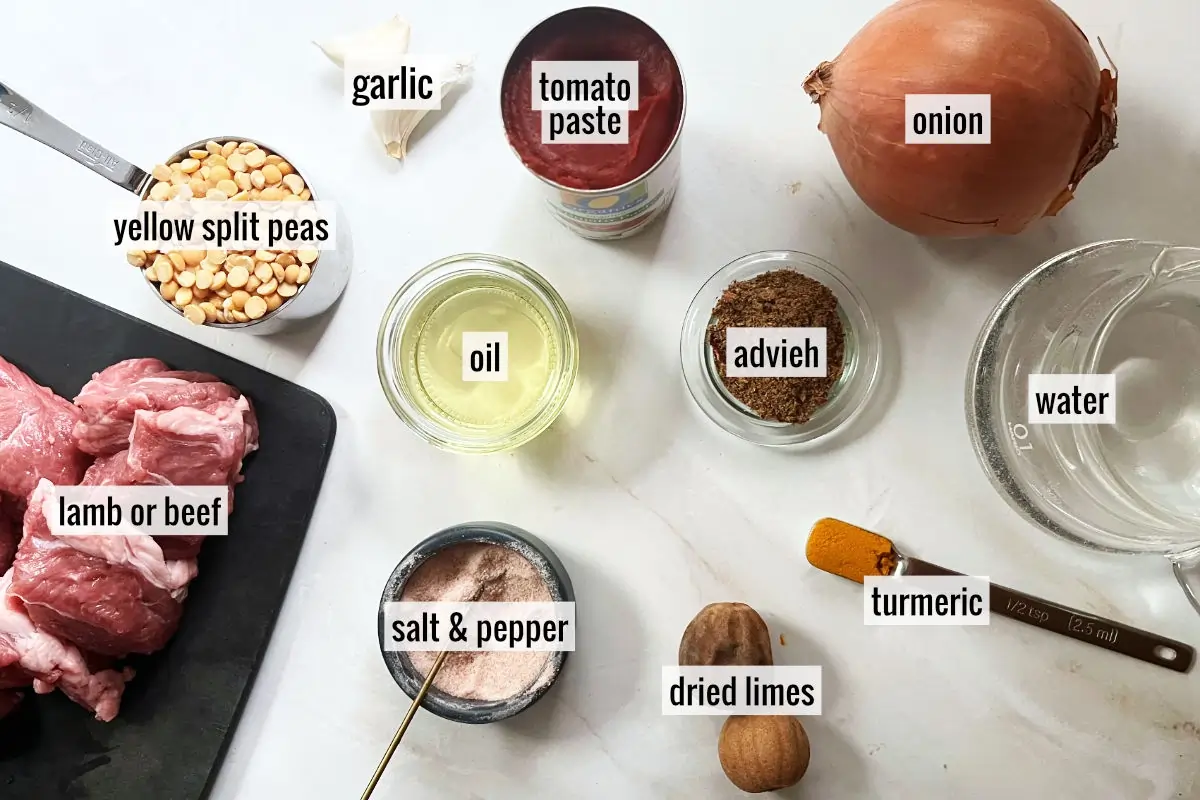
- 400 grams lamb or beef, cut into cubes
- 1 cup yellow split peas (sometimes labeled as Chana dal)
- 1 large onion, finely chopped
- 2-3 medium eggplants, peeled and sliced lengthwise
- 2 medium tomatoes, chopped (or 2 tablespoons tomato paste)
- 2-3 dried Persian limes (limoo amani; available at specialty stores)
- 1 teaspoon turmeric
- ½ teaspoon ground cinnamon
- ¼ teaspoon black pepper
- 1 teaspoon salt (add more to taste)
- 3-4 tablespoons vegetable oil
- 2 cups water or beef stock
- Optional: A pinch of saffron dissolved in hot water
How to Cook: Step by Step
- Prepare the Eggplants:
Peel and slice the eggplants lengthwise, about 1 cm thick. Sprinkle them with salt to help draw out any bitterness, and let them rest for about 30 minutes. Rinse the slices and pat dry. Lightly fry the eggplant slices in hot oil until golden brown on both sides. Remove and place on paper towels to absorb excess oil.
- Cook the Split Peas:
Rinse the yellow split peas and simmer them in water for about 10 to 15 minutes so they begin to soften. Drain and set aside. (They’ll finish cooking in the stew.)
- Make the Meat Base:
In a large stew pot, heat 2 tablespoons of oil. Sauté the chopped onions until translucent and starting to brown. Add the cubed meat, and cook until the outside is browned. Sprinkle in the turmeric, cinnamon, and pepper, and stir to release their fragrance.
- Add Tomato and Split Peas:
Stir in the chopped tomatoes or tomato paste. Cook until the tomatoes are soft, and the oil begins to separate. Add in the pre-cooked split peas, mixing everything together.
- Add Liquid and Limes:
Pour in just enough water or beef stock to cover the mixture. Pierce the dried limes with a fork and add them to the pot. Sprinkle with salt and bring the entire stew to a gentle boil, then reduce the heat, cover, and simmer for about 40 minutes to let the flavors blend and the meat become tender.
- Add the Eggplants:
Gently add the fried eggplant slices to the top of the stew. If using saffron, add it now for an extra aromatic touch. Try not to stir too much, so the eggplant can keep its texture. Cover and simmer for another 20–30 minutes.
- Serve:
Khoreshte Gheymeh Bademjan is ready to serve when the stew is thick, the oil has risen to the top, and the eggplant is meltingly tender. Spoon it over a bed of steamed Persian rice, ideally with crispy Tahdig!
What to Serve Beside Khoreshte Gheymeh
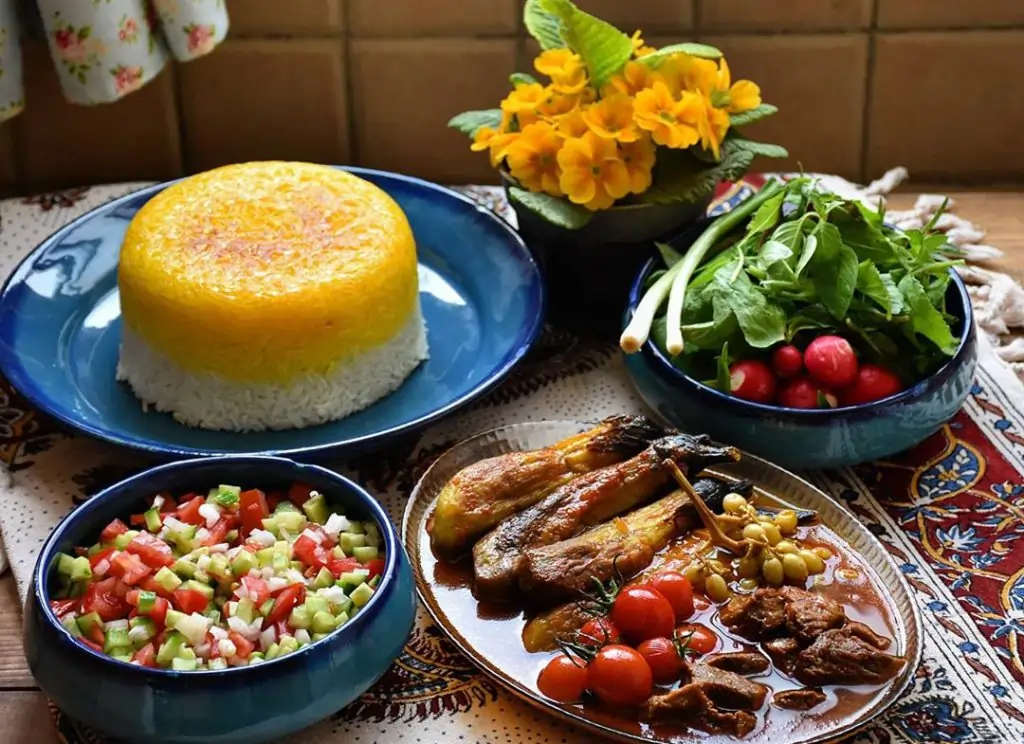
Traditionally, this stew is enjoyed with Persian-style steamed basmati rice, and almost always with Persian crispy cake (Tahdig)—the golden, crisp bottom crust of the rice pot. You can also serve it alongside fresh herbs (sabzi khordan), yogurt, pickled vegetables (torshi), or a refreshing cucumber and tomato Shirazi salad. It pairs beautifully with other popular Iranian dishes at any family gathering.
Nutrition Facts (Per Serving)
|
Nutrient |
Value |
|
Calories |
385 kcal |
|
Protein |
23 g |
|
Fat |
16 g |
|
Carbohydrates |
31 g |
|
Fiber |
8 g |
|
Sodium |
510 mg |
|
Cholesterol |
50 mg |
|
Iron |
3 mg |
These numbers are estimates. For a lighter dish, roast rather than fry the eggplants and use lean meat or a meatless substitute.
Special Mom Tips for Richer Khoreshte Gheymeh
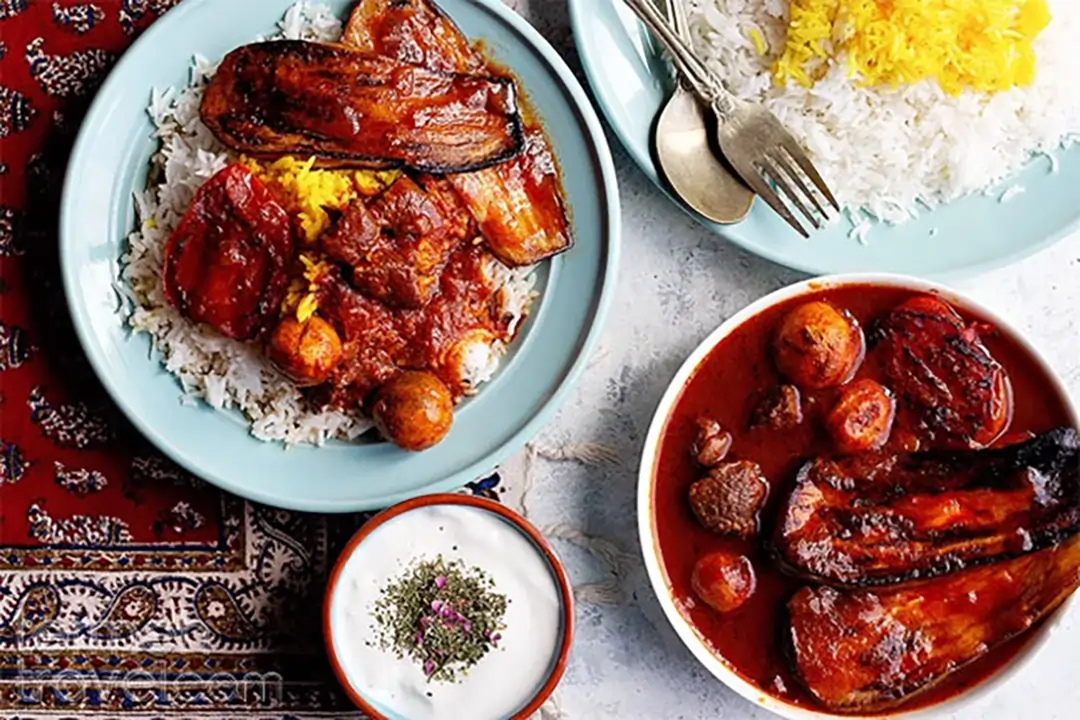
- Use some bone-in meat for extra flavor, removing bones before serving.
- Sauté the tomato paste until it’s a shade darker—this deepens the stew’s taste and gives a beautiful color.
- Always use dried Persian limes and prick them with a fork, so their tangy flavor diffuses in the stew.
- Layer the fried eggplant on top instead of mixing it in, which keeps it silky but intact.
- Let your stew rest and reheat it before serving—like many Persian dishes, it tastes even better the next day as the flavors combine!
Finally
From the time of ancient Persian courts to today’s family kitchens, Khoreshte Gheymeh Bademjan showcases the heart of Iran’s culinary tradition. Whether you’re a new fan of Persian food or a regular at favorite Iranian restaurants, learning to cook this dish is a delicious way to connect with the vibrant culture of the oldest country in the world. Try it once, and it might just become the new favorite among your most beloved home-cooked meals!
Frequently Asked Questions
- Can I make Khoreshte Gheymeh Bademjan vegetarian?
Yes. Simply swap the meat for mushrooms, tofu, or another plant-based protein, and use vegetable stock.
- I can’t find dried Persian limes. What can I use instead?
If you’re unable to find limoo amani, a squeeze of lemon juice or a little dried lime powder can add sourness, but limoo amani is essential for the authentic flavor.
- How far in advance can I make this stew?
Khoreshte Gheymeh Bademjan keeps very well refrigerated for up to three days. It often tastes even better the next day!
- What kind of rice should I serve with it?
Traditional Persian rice (steamed basmati) is best—don’t miss out on the Tahdig for a true Persian experience.
- Is this dish spicy?
No, it’s aromatic and tangy but not hot. You can add a pinch of chili if you want a little heat.

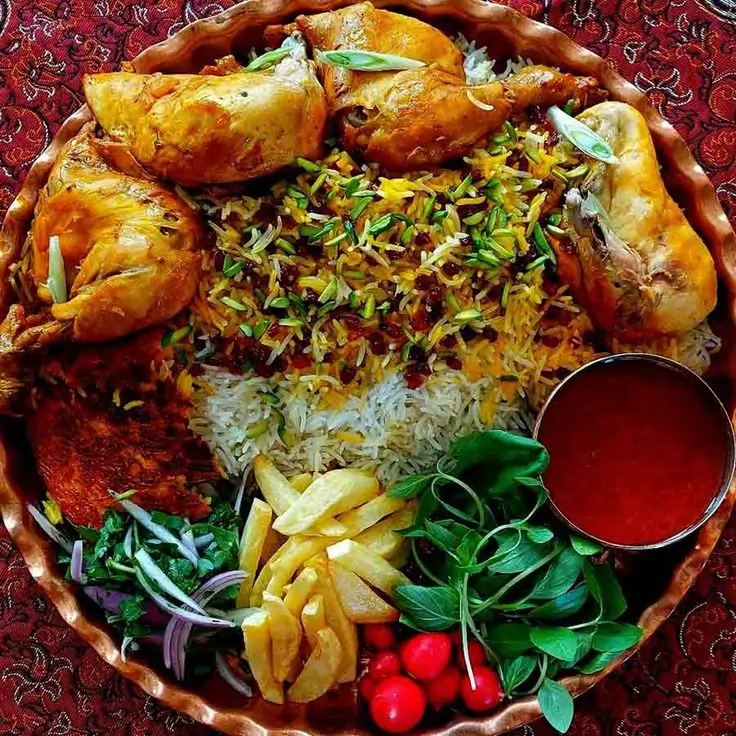
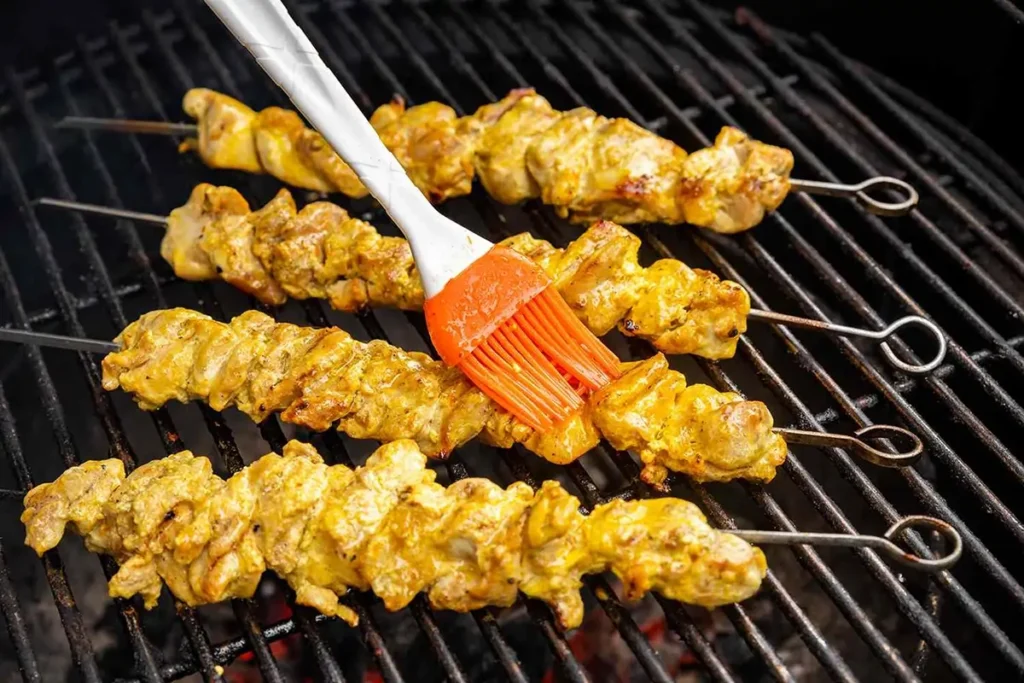
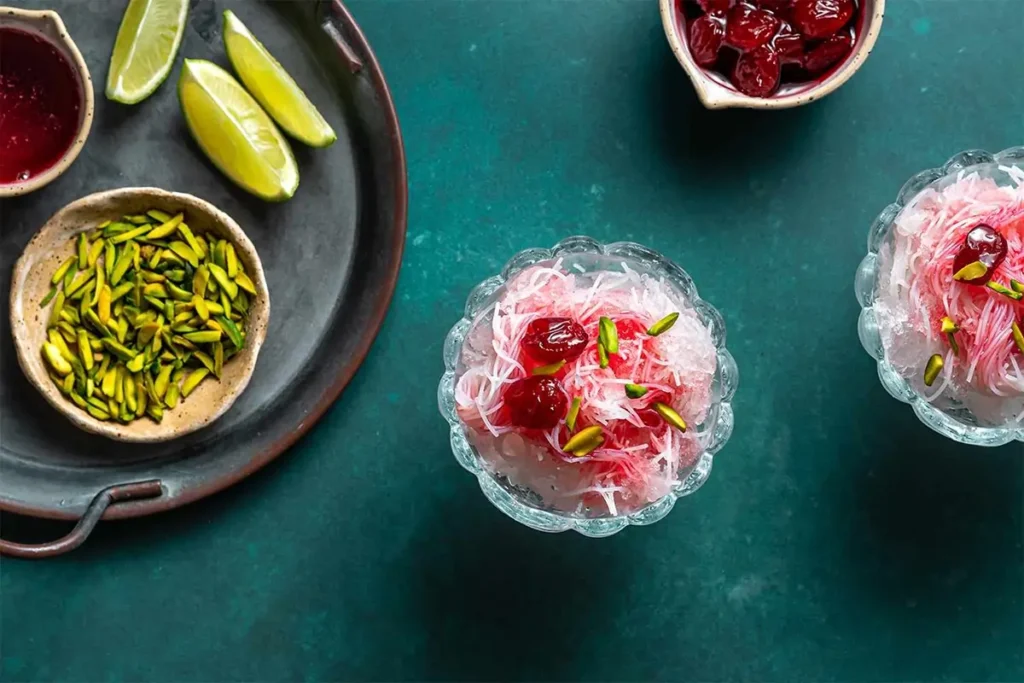
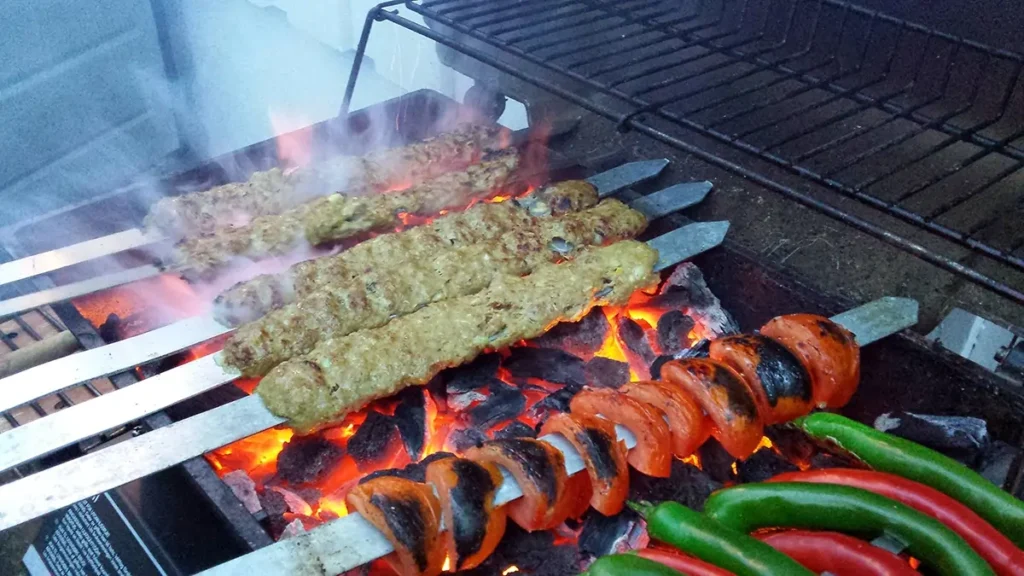

Responses